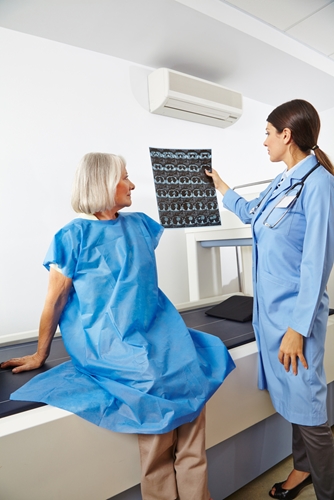Communication between radiologists and referring physicians is an important component of the continuum of care, ensuring that patients receive the optimal treatments and tests are not repeated. Many health care facilities use land lines and pager systems for medical staff to contact one another.
However, an article recently published in the Journal of the American College of Radiology showed that hospital-based cell phones could boost the quality of communications between radiologists and on-the-go physicians, HealthImaging reported. David Naeger, M.D., and his colleagues from the Department of Radiology and Biomedical Imaging at the University of California-San Francisco conducted an assessment of the needs at their facility.
"A formal written report after image interpretation has been the mainstay of communication in radiology for decades," wrote the researchers, quoted by the news source. "Although this is an important document for record keeping and the communication of routine findings, time-sensitive or important results require direct communication in a timely manner."
Naeger and his team of researchers distributed a survey to a small sample of radiology and neurology residents – eight in total – and found that the typical mode of communication among these physicians was a pager. Upon receiving the alert from a radiologist, the neurologist would then use a landline phone to call the medical imaging specialist. While it can be an effective way to discuss health information, the process can take a considerable amount of time. The needs assessment revealed that phone calls between the doctors added more clinical histories from patients, facilitating the interpretation of scans and improving diagnoses from digital imaging.
Following the assessment, the departments received cell phones that were developed to not interfere with the electromagnetic frequencies of hospital equipment. After seven months had passed, Naeger distributed a follow-up survey to measure any possible improvements in communication that resulted from the introduction of cell phones. Overall, both departments reported high satisfaction with the new system, as it was easier to contact one another with the new phones rather than pagers and land lines.
Looking to alternative strategies
While the cell phone system implemented by Naeger proved to be beneficial for improving communication, there are various other options for radiologists to consider. FierceMedicalImaging explained that the American College of Radiology has offered multiple strategies for radiologists to facilitate transmission with referring physicians, including:
- Removing diagnostic radiology jargon
- Avoid using multiple terms to describe the same condition
- Limit extra, unnecessary information
- List most important findings first to determine high-value priorities
- Provide supporting data for why additional studies are needed.
Providers could also consider having radiology reading rooms in clinical areas, as opposed to stationing it in one central part of the facility. This can help increase face-to-face time between radiologists and referring physicians, allowing them to communicate directly.
Communication is essential to navigating the complex world of health care, and the more that disparate physicians share information, the better quality of care they can provide. As doctors look to improve their chances at attesting to stage 2 of Meaningful Use and successfully engage patients, they should focus their efforts on discussing health data with referring physicians to facilitate care coordination across departments.
Ronny Bachrach
Latest posts by Ronny Bachrach (see all)
- Konica Minolta Debuts First-of-Its-Kind Digital U-Arm System at AHRA - July 27, 2016
- Researchers Detect Signs Of Stroke Risk Using MRI - June 27, 2016
- Imaging Biz: Q&A with David S. Channin MD: How to Make PACS Patient Centered - June 22, 2016









